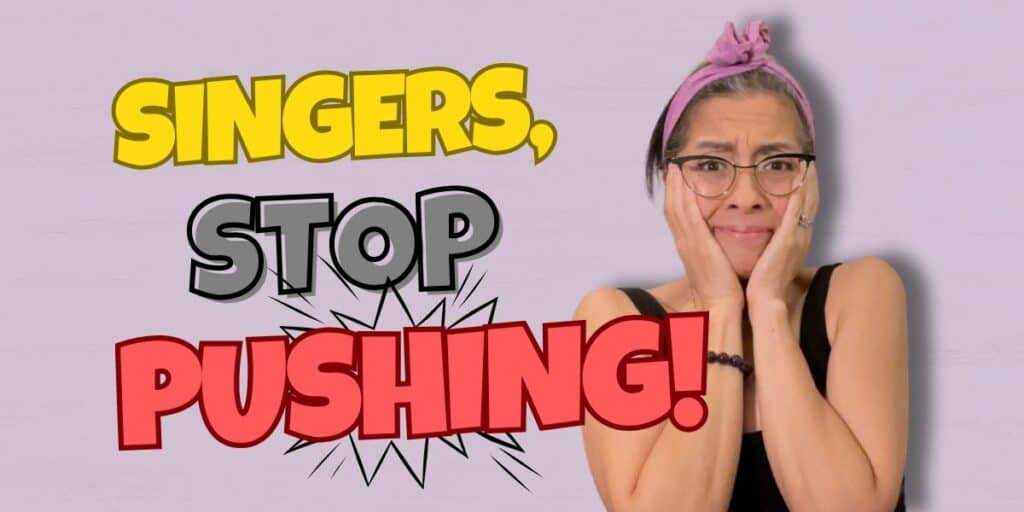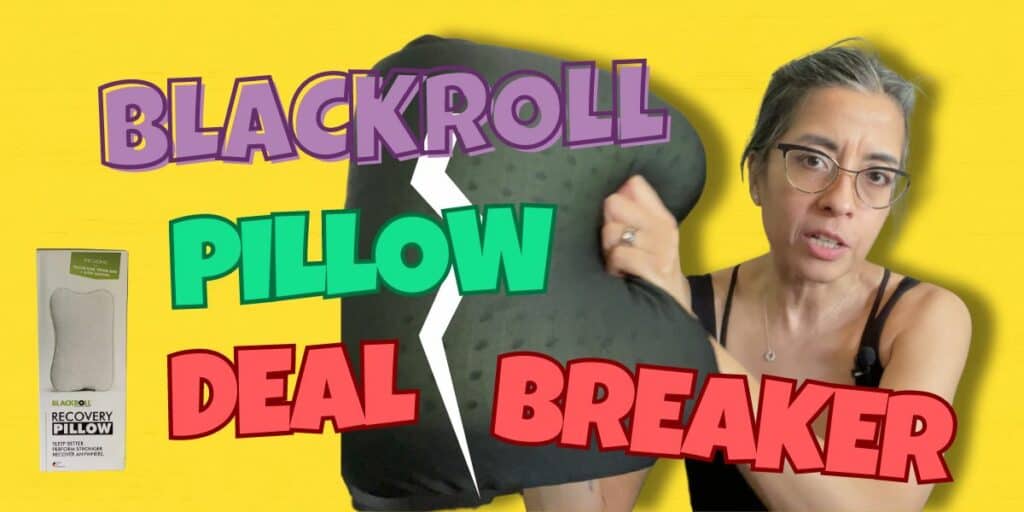How Voice Physiotherapy can Help Voice Recovery
I’ve always wanted to do a demo video to show you the effects laryngeal manual therapy can have on the voice, but because my vocal health is stable, I didn’t feel there was ever enough contrast for the before and after.
Like This Post?
Never miss a post.
Get our blog posts delivered straight to your inbox!
So when Covid finally got me, and dang!! That was awful! I was miserably sick for 2 weeks and it really messed up my voice, I knew this was the time.
I thought I should at least make something of this horrible experience, so here is an epic experiment that took over 5 hours to do to show your what effects treating my own neck, jaw, larynx, soft palate and tongue have on my voice.
I also shared a glimpse of how Integration exercises sync up your body-breath-voice.
I must say though, a lot of the relief I got were negated by talking so much to film. But what the heck! It was a worthwhile experiment, I’m glad I did it, and I hope it will show you what help is available out there should you find yourself in a similar situation.
You May Also Like: My Favourite Neck Stretch to Relieve Tight Voice
Follow @voice_physio on Instagram for content made for Singers!
’Til next time, Be Free In Your Movement™.
x
Selina
B. Phty
This information is not medical advice. Got health concerns? Consult a real-life health professional.
Views are my own.
*Affiliate links. Your choosing to use these goes towards supporting my content creation. Thank you.
Hi, I’m Selina, a physio and a singer. In this video I will share how Covid has affected my voice and what effect treating my own neck, jaw, and larynx have on my voice.
I will say up front that I won’t be demonstrating the exact treatment technique that I will be using. I’ll mention them but I will not be showing them, because frankly, I don’t want you to copy. These are not things you want to do to yourself. I only get to because I have a physiotherapy degree and that gives me the privilege of legally treating another person. Another privilege that comes with that is that for certain things, I do get to look after myself. My aim here is to show you what help is out there so should you ever find yourself in a similar situation, you know who to get help from.
I will start with how Covid has affected my voice then work on each area and do a before and after siren for comparison. I will finish by telling you where you can get help from and what to expect when you go see someone.
I recently realised that it has been 2 years since my third Covid vaccination, and just as I was about to get another one, it got me. So let this be a reminder that if you are overdue, make sure you book yourself in after watching this video. Covid wasn’t nice so please protect yourself.
Covid affected me in many ways but I’ll will focus on how it affected my voice. My main struggle was the post nasal drip from the raging sinuses and the sore throat, all that yucky stuff draining down really irritated my whole pharynx and laryngeal area and I was randomly choking on my own breath, still am. And it made me want to clear my throat and cough and I did quite a bit of that.
I knew I was getting tight all around my throat, and then my neck and my jaw also started getting tight. I did try to stretch them out but frankly I was too miserable to care.
Right now my voice doesn’t feel normal at all. To me it is not clear, it is croaky, it was a lot deeper than it normally is, and it was also randomly frying without me trying to. It feels very tight, in fact it feels quite stuck down around here, even when I mindfully support and project forward it still feels quite stuck. It feels a lot more effortful to voice and it also tires a lot quicker than usual. So even though I really want to sing, right now I really just don’t think I have the capacity to.
When I finally palpated my own larynx things were worse than I realised. If my arm is the trachea and my hand is the larynx, normally there is a little space behind the larynx called the posterior access. Right now, it’s more like this. There’s practically no access. I believe my constrictor muscles have gone wild from all the throat clearing and coughing and have really constricted the area up. And that kind of muscle tension can certainly contribute to how my voice is feeling right now.
Now I’m going to do a baseline before siren, then I’m going to go work on my neck first and then come back and do a before and after comparison.
[Vocalising]
Okay. Let’s see what we can do about that.
So I’ve just spent about half an hour working on my neck and here’s what I have found. Movement wise it wasn’t too bad, I still had near full range of movement, it’s just that everything feels tight. My neck joints were all stiff and tender to touch, so were my first ribs. Soft tissue wise sternocleidomastoid, upper traps, scalenes and sub-occipitals, they all had undue muscle tension and were tender to touch. So what I’ve done was that I did unilateral joint mobilisations from C0/1 to C6/7, about 30 seconds each. I did caudad glide on my first ribs, 30 seconds each, and I did some sub-occipital stretching and I did some soft tissue work on all those muscles. So let’s have a revision of the before treatment siren.
[Vocalising]
And this is now the post neck treatment siren.
[Vocalising]
That’s promising. Now I’m going to go work on my jaw and see what it does for my voice.
I’ve just spent about 20 minutes working on my jaws and here’s what I’ve found. My masseters were holding a lot of muscle tension and they were quite tender, and so were my medial pterygoid inside the mouth. My right side was worse than my left side. The jaw joints themselves was a bit stiff and tender and so I mobilised them, gave it a good stretch and also work on those muscles. And now we will review the previous sirens, so the baseline pre treatment siren and also the post neck treatment siren.
[Vocalising]
And now this is the post jaw treatment siren.
[Vocalising]
Not bad. Now next I’m going to work on my larynx, I’m really looking forward to this so see you soon.
So I’ve just spent about 30 minutes working on my larynx and here’s what I’ve found. Everything was quite tender, there was a lot of undue muscle tension in my suprahyoids, infrahyoids, and like I mentioned before I have barely any posterior access space and my cricothyroid joint was also rather reluctant to tilt, so I mobilised the joint and also did soft tissue work on the suprahyoids, infrahyoids and I was able to recover a little bit of my posterior access space. Now let’s have a listen to the before treatment siren, the post neck treatment siren, the post jaw treatment siren, and then we will do the post laryngeal treatment siren.
[Vocalising]
And this is the post laryngeal treatment siren.
[Vocalising]
What do you think? I certainly feel better, not quite there yet, but definitely better. And you know what? Let’s go nuts! I’m going to go quickly work on my soft palate and my tongue, because I can, so why not.
So I just spent about 5 minutes working on my soft palate and my tongue and here’s what I’ve found. My soft palate wasn’t too bad at all, however, there was a lot of undue tension in my tongue so I gave it a good stretch. Now let’s have a look at all the previous sirens before we do a post soft palate and tongue treatment siren.
[Vocalising]
[Vocalising]
After all that extensive treatment my voice now feels kind of wobbly and I really feel like I need to do some Integration.
Integration is a term I use to describe the exercises we do to train your body, your breath, and your voice to coordinate well without interfering with one another. Think of it as syncing up your A Team.
Let me emphasise that I am not a speech pathologist, I do not know how to prescribe voice exercises. As an informed singer, my personal choice for the voicing component for Integration is to do semi occluded vocal track exercises.
I’ve just done about 5 minutes of SOVT exercises with Integration. Here’s a time lapse for you. I did some voiceless bubbles to start with and then I moved on to very easy pitch glides, 1-2-3 and then 1-3-5 in a very, very comfortable, easy part of my range. And whilst I was doing that I was doing some high knee marching, standing on one leg moving my leg around, and also some static lunges.
I’ll be sharing more about Integration in future videos so if you’re interested make sure you subscribe.
Now let’s have a listen to all the sirens we’ve done before and then we will do a post Integration siren.
[Vocalising]
[Vocalising]
I am definitely happy with how things are travelling for me. What do you think? Let me know your thoughts in the comments.
As you can see, as muscle tension is progressively alleviated, the quality of my voice changed quite noticeably.
However, it is important to note that manual therapy, as effective as it can be, only provides temporary relief. It can be a very powerful tool to help break you out of the muscle tension cycle, but it alone CAN NOT EVER fix you.
I’ll tell you shortly what I will be focusing on for my voice in the next few weeks so make sure you keep watching.
If you’re interested in some of these treatments, here’s how you can access them here in Australia.
If you want your neck treated, any private practice physio can help you out, you do not need a doctor’s referral, you can just book in.
If you want your jaw treated I encourage you to find a physio who said in their profile that they treat the jaw. Whilst we all learn about the jaws at uni, it wasn’t in depth like we did the spine or the peripheral joints. In fact, I was told not to worry about the TMJ or the SIJ because apparently we don’t see very many of them. What a crock of shit. I have seen so many. That’s why I sought extra training because I felt lacking and needed to know more so I can help my patients properly. Not all physios are interested in treating the jaw but those who do will say so.
If you want your larynx treated you will definitely need to find a physio who says they do laryngeal manual therapy. They may call it Vocal Unloading which is the formal name. After I have done my Vocal Unloading training I asked people what they thought Vocal Unloading is and nobody related it to the voice. I needed more clarity so I started calling it Voice Physio and I created my Voice Physio account on Instagram. And it seems like a lot more other physios are calling it that too now so you may see that as well.
You can also get laryngeal manual therapy from a voice specialising speech pathologist who have also done training in laryngeal manual therapy.
In Australia, I know there are Voice Physios and/or speechies who have laryngeal manual therapy training in Melbourne, Sydney, Brisbane, Adelaide, and Perth. Google is your friend here, if you’re not sure, just ask them.
If you’re located somewhere where no one does laryngeal manual therapy, it may still be worth your while having physio for your neck. As you have seen, alleviating some of those associated muscle tension can help, and it may also help you to not get worse, which is a good thing.
Here’s what to expect when you go see someone in real life. You are not going to get the whole shebang I have shown you here today, because there is a process to treatment and it all takes time. In reality, all these will likely take place over four to six sessions. I’ve condensed this into a highlight reel for you simply because I can. For science!
I promised to share what I’m going to focus on for my voice next so here they are.
I’m going to up the stretches I do throughout the day and I’ll link my favourite neck stretch for you.
I’m going to restart my morning movement routine now that I feel energetic enough for it.
I’ll probably treat myself again in 2, 3 day’s time but I definitely won’t be doing everything in one go like this, and depending on how that goes I may do some more next week.
I’ll keep doing my SOVT and Integration exercises every day.
My Vocal Load has drastically reduced in the last couple of weeks and being a physio I am only too mindful that doing too much too soon, after doing too little for a while, is a very promising way of creating musculoskeletal overuse issues and your voice is no exception. In fact, I’m feeling pretty tired in my voice right now, so over the next couple of weeks I will gradually build my Vocal Load backup to pre-sickness level.
That’s the plan and I hope it will sort me out. If it doesn’t, I’ll go see a speech pathologist for help.
So that was a fun little non-scientific self-case-study of what’s happening with me.
To reiterate, this was just to show you what kind of help is available, if you need help, please go see the right physio or speechie and get personalised healthcare.
And that’s it from me today, I’m going to go rest my voice now but do let me know with the thumbs whether you liked this or hated it. And please subscribe to help me grow this channel.
‘Til next time, Be Free In Your Movement.™
So my voice got very tired at the end of filming yesterday, and after a nice rest and doing the things I said I would do in the video, this is what I sound like today. I’m still not there yet but I’m very happy with how things are travelling and I thought this would be a nice little bonus to show you what it’s like the next day.







